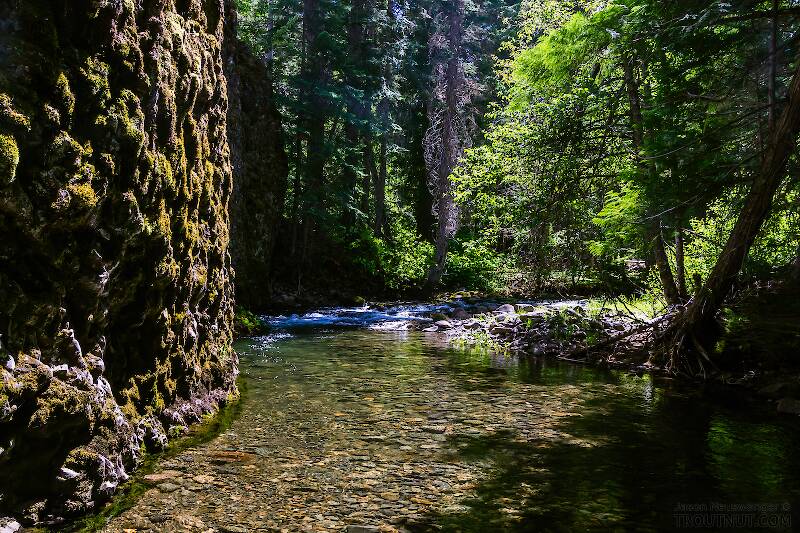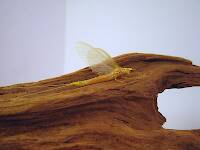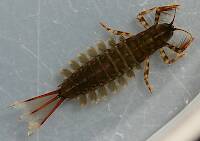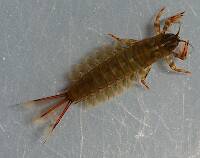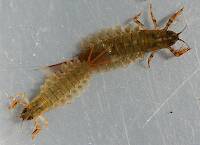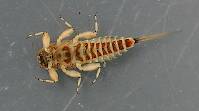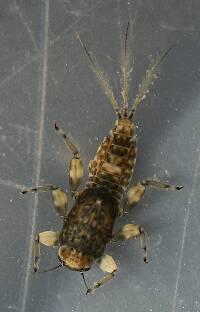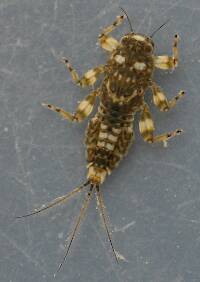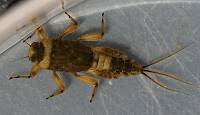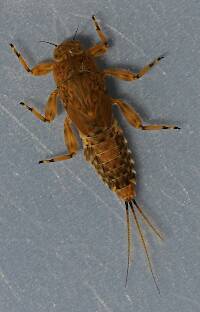
Blue-winged Olives
Baetis
Tiny Baetis mayflies are perhaps the most commonly encountered and imitated by anglers on all American trout streams due to their great abundance, widespread distribution, and trout-friendly emergence habits.
Featured on the forum

This one was surprisingly straightforward to identify. The lack of a sclerite at the base of the lateral hump narrows the field quite a bit, and the other options followed fairly obvious characteristics to Clostoeca, which only has one species, Clostoeca disjuncta.

Troutnut is a project started in 2003 by salmonid ecologist Jason "Troutnut" Neuswanger to help anglers and
fly tyers unabashedly embrace the entomological side of the sport. Learn more about Troutnut or
support the project for an enhanced experience here.
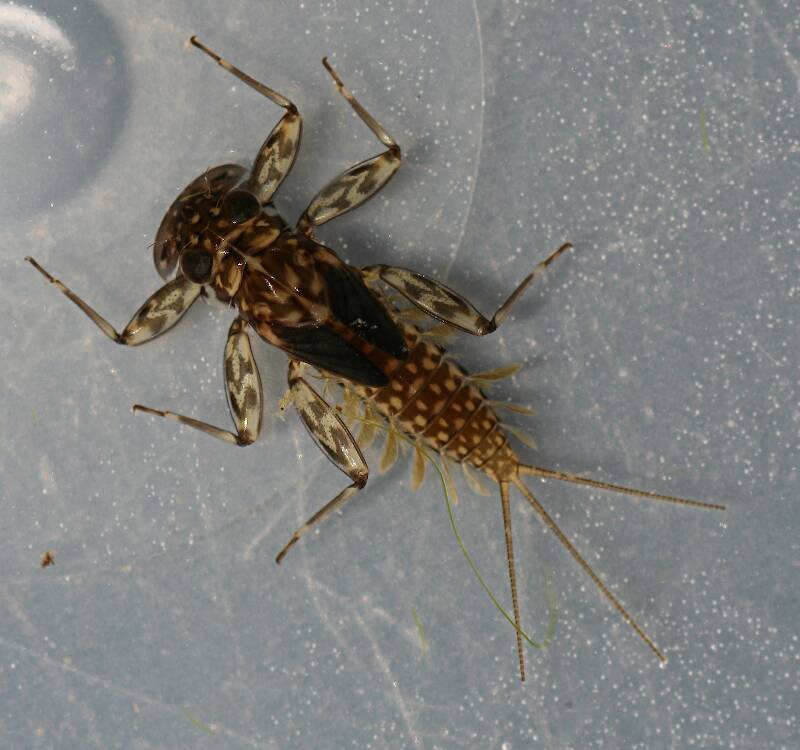
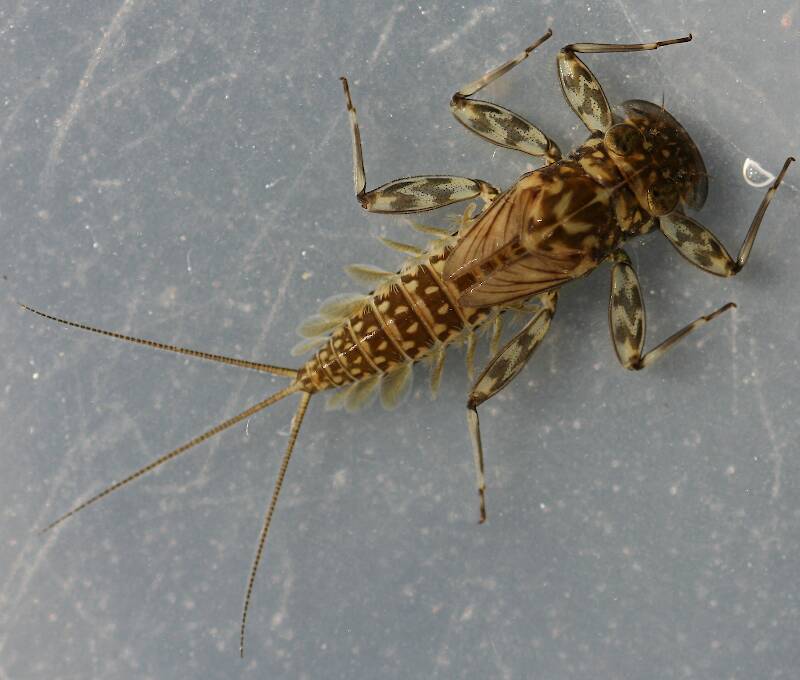
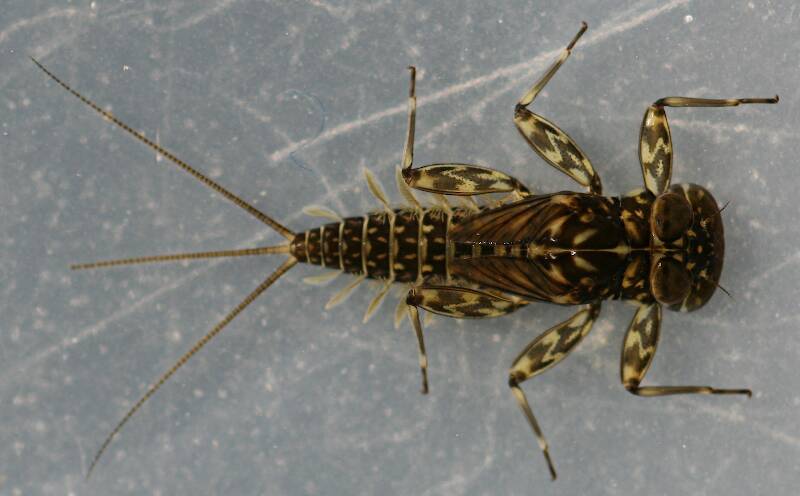
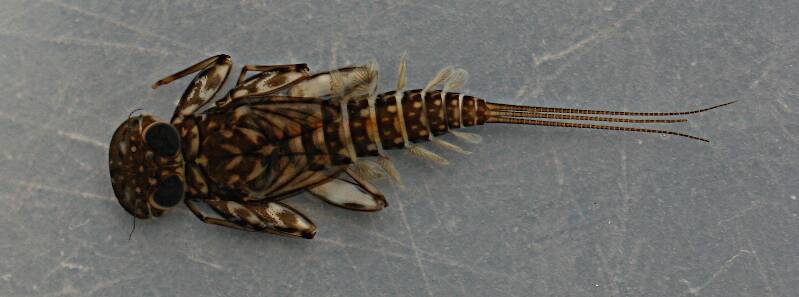
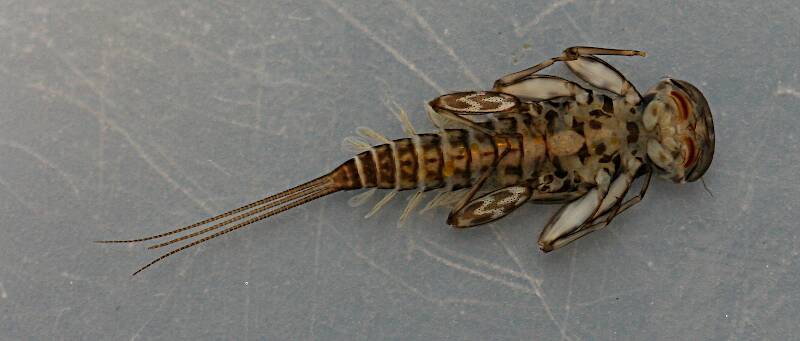
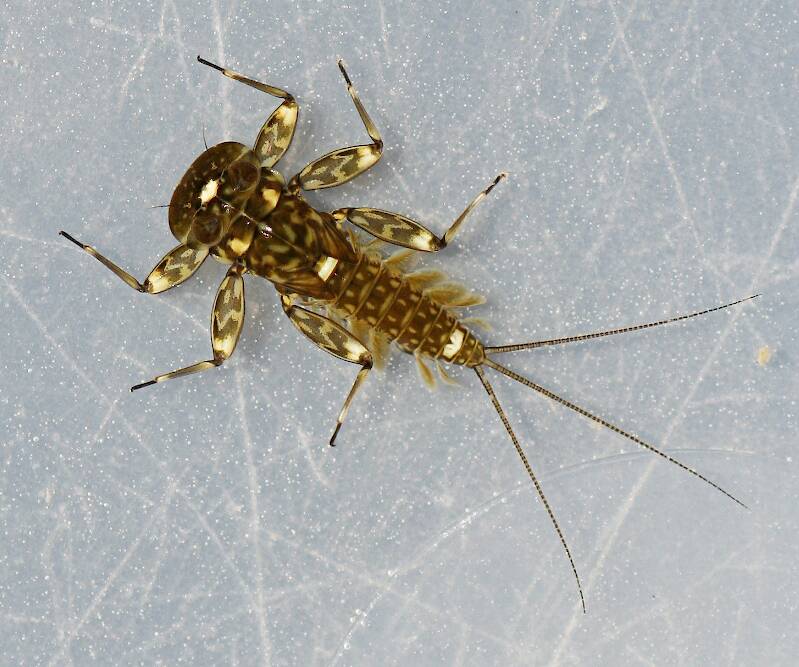
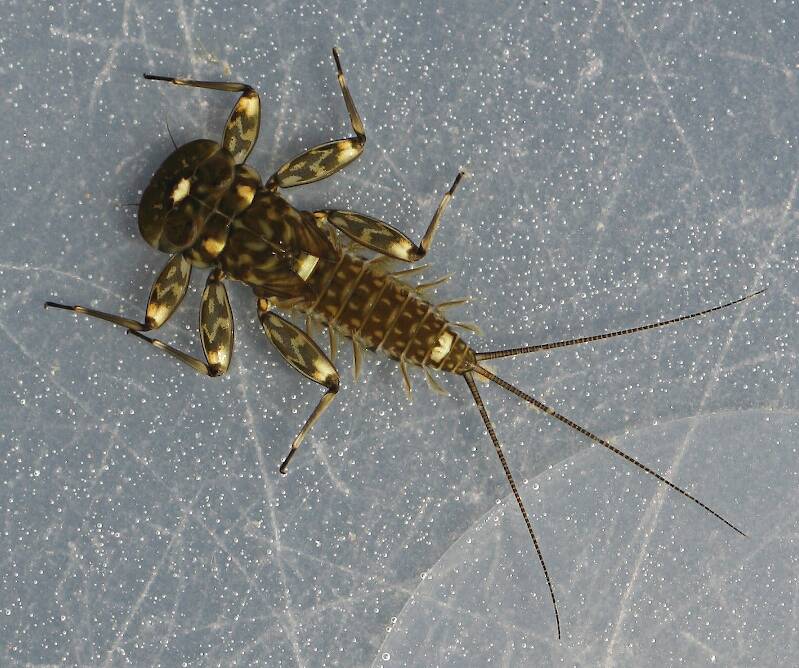
Millcreek on Sep 25, 2014September 25th, 2014, 3:07 pm EDT
These nymphs are abundant in the Russian River from April to June. I've keyed them out to Nixe using Merritt, Cummins and Berg but have been unable to ID them to species. The only Nixe species I've been able to find recorded from California is N. kennedyi but the nymphs are not described and I haven't collected any adults in the area. Does anybody know anything more about the nymphs?
The nymphs seem to have two distinct pattern types. Not sure if that's just a color variation or whether they could be two different species. Photos show the two variations.
The nymphs seem to have two distinct pattern types. Not sure if that's just a color variation or whether they could be two different species. Photos show the two variations.
"If we knew what it was we were doing, it would not be called research, would it?"
-Albert Einstein
-Albert Einstein
Creno on Sep 25, 2014September 25th, 2014, 3:28 pm EDT
Millcreek - are you collecting both forms at the same time/place? creno
Millcreek on Sep 25, 2014September 25th, 2014, 3:33 pm EDT
Dave - Yes, although variation #2 tends to show up about a week later. I've often collected both forms off the same rock.
"If we knew what it was we were doing, it would not be called research, would it?"
-Albert Einstein
-Albert Einstein
Entoman on Sep 26, 2014September 26th, 2014, 8:14 pm EDT
I can't make out the mouthparts but the head spots and small lateral spines clearly agree with your assessment. Perhaps the difference between the two is due to dimorphism.
"It's not that I find fishing so important, it's just that I find all other endeavors of Man equally unimportant... And not nearly as much fun!" Robert Traver, Anatomy of a Fisherman
Millcreek on Sep 27, 2014September 27th, 2014, 7:46 am EDT
Perhaps the difference between the two is due to dimorphism.
It could be. Either two variations in the same species or differences between male and female. Probably more likely than two species. Separating the two variations and rearing the mature nymphs should provide answers. Hope to be set up next year for rearing nymphs.
"If we knew what it was we were doing, it would not be called research, would it?"
-Albert Einstein
-Albert Einstein
Quick Reply
Related Discussions
Topic
Replies
Last Reply
7
Mar 13, 2007
by Troutnut
by Troutnut
45
Oct 8, 2014
by TroutBums
by TroutBums
19
Jan 20, 2008
by Troutnut
by Troutnut

